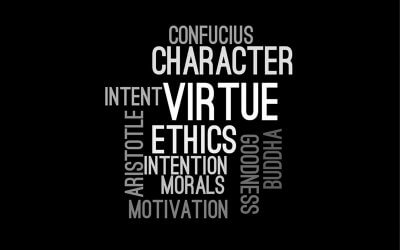Discover how understanding the limitations of averages and embracing probabilistic thinking can improve decision-making and risk management in business.

Arthur Laffer, The Horror Sequel Maybe Coming
Say it isn’t so! Sean Hannity is promoting the idea of putting Arthur Laffer in charge of getting American back to work, and Laffer has been advising the President. Laffer is the mastermind behind the Reagan-era tax cuts and a pioneer behind the notion that slashing taxes unleashes economic growth. While Reagan cut taxes, he had to raise them later as the economic growth Laffer promised never materialized to prevent huge deficits. George H. W. Bush had to increase taxes further as growth still wasn’t enough to overcome the deficits from the tax cuts. However, never one to let facts get in the way of a theory, in his 2018 book, Trumponomics, which he co-authored with conservative economic commentator Stephen Moore, Laffer argued that the Trump administration’s 2017 tax plan would raise growth rates to as much as 6% and not increase budget deficits. Wrong on both counts – 10pts. Of course, after Laffer’s great theory hit the proverbial iceberg in Kansas, one would think he would be more circumspect, but alas no. As I look at it, he is at least 0 for 4.
According to Reuters and Business Insider, Laffer is calling for three actions:
-
Impose taxes on non-profit organizations that encourage the arts and education, among others.
-
A 15% pay cut to the taxpayer-funded salaries of government officials and professors.
-
Enact a payroll tax cut holiday for employees and businesses until the end of the year.
Also, Laffer was against the current stimulus because he argues it would serve to discourage people from working and inflict more pain on the economy.
Let’s look at each of his proposals, in reverse order.
Against the current stimulus
The country is closed. With unemployment soaring, 16.6 million as of the latest count, many cannot afford the basics, like rent and mortgage payments. Their inability to work is not due to laziness; they were just laid off. If they don’t pay those bills, landlords and banks will suffer. Besides, without some form of help, they cannot afford car payments, groceries, or medical bills, to name a few things. The U.S. is a consumer economy, and consumer spending in the U.S. was about 71% in 2013. A reduction in consumer spending hurts companies that supply consumers who, in turn, lay off more workers as revenues fall. Thus, we get into a negative feedback loop, increasing the damage at each turn. When this is over, which it will be, those hurt through this negative feedback loop will be unable to quickly return to spend as they would have had their wealth decimated and will look to keep expenditures low while they rebuild their savings or come out of bankruptcy.
Enact a payroll tax cut holiday for employees and businesses until the end of the year.
The President has touted this many times, but as has is noted, it only helps that are working. With nearly 17 million now unemployed, this does nothing to help them. Those that have jobs are unlikely to rush out to spend the little extra they have as everyone is hunkering down financially due to the uncertainty. There is an expected tsunami of bankruptcies coming and possibly worse than in 2008. His proposal will do nothing to alleviate that issue, further depressing the economy.
A 15% pay cut to the taxpayer-funded salaries of government officials and professors.
Such a policy would harm those federal workers as such a significant reduction in their income will reduce the level of their spending as well since the federal government employs about two million people and pays about $136.3 billion a year in wages and salaries. Thus a 15% cut would reduce the wage bill by $20 billion. Economists estimate that the marginal propensity to consume in the U.S. is about 5%, so that the reduction would reduce U.S. spending by $270 billion a year. In effect, this would wipe out the stimulus and decimate the economy further.
Since Ronald Reagan’s statement that the worst thing was the government, those on the right have been seeking to cut the size of the government. However, as we think of cutting “worthless,” government employees consider that (i) if you pay peanuts, you get monkeys, and (ii) surely in relevant agencies we want the best people, not those that have no choice. Among government employees, there are:
-
The military – probably a “No-No.”
-
The FBI – what we need, more problems with law enforcement, and increase the probability of corruption.
-
The Justice Department and Federal Prosecutors – See FBI
-
Medical researchers and specialists who are working on COVID and other diseases. These people sacrifice a considerable amount for relatively little pay because they believe in what they are doing, unlike many in business who are just in it for the money. They work to keep us safe from COVID, Ebola, and other diseases. However, discouraging competent medical professionals and scientists is an excellent start to protect us from other pathogens.
-
The scientists are Los Alamos, N.W., and Oak Ridge, TN. We don’t need to take care of our nuclear facilities and weapons because hey look at Chernobyl.
-
International relations. Of course, we don’t need relationships with others now that we are going it alone. We may need someone to help us get essential medical products from a foreign county. I am sure Mike Pompeo or Jared Kushner can squeeze it in.
-
Air traffic controllers. We don’t need them, ask any pilot that has flown into Cairo.
-
Professors. Hopefully, the government hires excellent professors at its educational institutes. I am sure a pay cut will improve the quality of teaching and graduates.
I am sure, he didn’t mean any of these groups, so really what he is proposing is a non-event financially and just a personal vendetta against those he believes add no value.
Impose taxes on non-profit organizations that encourage the arts and education, among others.
I am sure that doing so would be a massive tax revenue booster. While false, the famous story of Churchill’s response, “What are we fighting for,” when asked to consider cutting funding for art programs to support the war effort, does strike a point. However, Churchill did say, “The arts are essential to any complete national life. The State owes it to itself to sustain and encourage them….Ill fares the race which fails to salute the arts with the reverence and delight which are their due.”
As I and others have noted, that those with a humanities background are better at management than STEM and business graduates. The arts are there to teach us empathy and what it is to be human. If we want to improve as a country, this is not the way to go about it.
As the saying goes, “When all you have is a hammer, everything looks like a nail.” Once more, it appears that Mr. Laffer is proposing his standard solutions without considering the facts. He should look to another economist, with a much better record, Keynes, who supposedly said, “When the Facts Change, I Change My Mind. What Do You Do, Sir?” Laffer has never changed his mind regardless of how the facts judge him. As someone whose views on many things have changed over the years, be it down to persuasion by others, more information and data, or just Bayesian logic, I find his position enough to disqualify him and his suggestions from any serious economic consideration.
Copyright (c) 2020, Marc A. Borrelli
Recent Posts
The “Flaw of Averages” Causes Havoc for Businesses
What is Your Strategy, In a Sentence?
If you are banking on the vaccine returning us all to “normal” quite quickly, in the famous words of Dr. Akande, “Hope is not a strategy.” Your organization should be preparing a well-defined strategy for 2021 and beyond. Once you have this strategy, the ultimate question: can you clearly articulate it in one sentence? Distilling your strategy into a single sentence is a powerful tool, both for your legacy and your team effectiveness. Not sure where to start? I offer a plug-in formula to set up your strategy sentence.
Character Matters
“It’s easier to hold to your principles 100% of the time than it is to hold to them 98% of the time.” — Clayton Christiansen. I have often written about the importance of a company’s Core Values. That’s because no matter what words you may have chosen as values, your organization’s Core Values are on display in how leadership and employees actually behave. As I’ve said before, how you have acted in the last twelve months will define your career for the next decade. Your character, and your company’s character, matters.
New Year’s Resolutions, Once More Unto the Breach
The holidays have been even quieter than normal, which has given me plenty of time to reflect on my New Year’s resolutions. Looking at 2021, I decided to use a completely new approach to lay out my goals. The result of my new approach? A highly-detailed, accountable, actually achievable plan for the next year (I think). Wondering what this process looks like?
To Vaccinate or Not to Vaccinate, that is the Question
What do your employees, peers, and leadership team think of the COVID-19 vaccine? Will you require the vaccine, or will you let employees make individual decisions? As a leader, you need to steer the discussion about vaccines in your organization with your Core Values in mind. No matter what strategy your organization takes, the most important factor is going to be how you communicate your decision.
3 Ways You Could be Undermining Your Core Values
Can you answer “Why does your organization exist? What are your core values?” Great. Now, would your latest entry-level employee give a similar answer? How about someone who has been at your company for a year? Your core values give your organization a guiding mission. Many organizations pay this idea lip service, but their true commitment to their core values was tested this year. As we close out 2020, there’s no better time to examine how your organization is approaching your core values.
Are You Prepared for 2021 With Enough Cash?
Companies don’t go bankrupt because they lose money; rather, they run out of cash. Where are we, heading into 2021? First, you can expect your cash to get tighter as we weather the current economic slowdown. Then, with a vaccine on the horizon, you will need to be positioned for growth. If you don’t have the cash you need, have you looked at how you can generate the cash internally? More on how to improve your cash conversion cycle…
Tony Hsieh, a Corporate Culture Icon, RIP
In his work as Zappos CEO and elsewhere, Tony Hsieh believed, and proved, that culture is the most important thing in an organization. According to Hsieh, if you get the culture right, the rest will take of itself. How did Zappos do it? You can take a look at everything from the company’s interview questions, to “The Offer” to leave a position as a new hire. Hsieh believed that a company’s brand is just a reflection of the culture, and his legacy is felt across so many industries.
CEO, Try Thy Hiring System
How does your company hire? I’ve seen the good, the bad, and the surprisingly ugly hiring processes in my career. From the HR email mix-ups to the interviewer watching the World Series while I responded to his questions, I’ve learned that you can tell a lot about an organization simply by examining the hiring experience. Are you chasing away the kind of people you need at your company?
What is Leadership?
What is it, exactly, that great leaders do? There are plenty of overused adages about “leadership” in business. It’s worth examining the tropes around leadership, plus the traits of the leaders who actually leave a mark. Great leaders are forged through adversity, and they leave a legacy. What does that look like in your organization?










